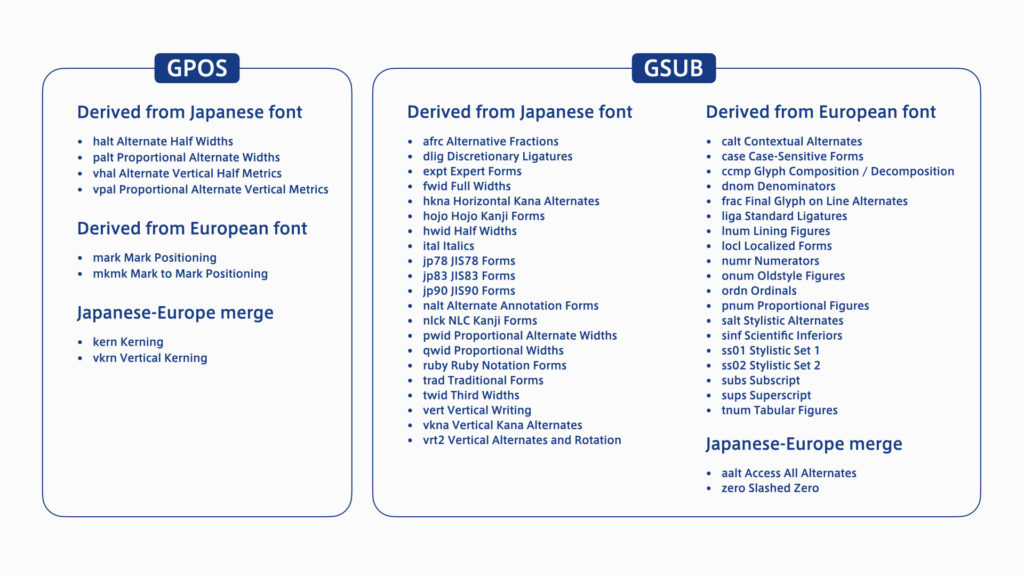Using our Latin combination experience in the past, we have developed a tool to effectively merge the GPOS/GSUB feature that is utilized at the time of merging Japanese font and Latin font in the FitFont Service.
When creating one font in a combination between a Latin font and Japanese font, care must be taken when handling the OpenType feature, because changes in glyph shape caused by overwriting the Japanese font side glyph on the Latin font glyph can also influence the OpenType feature. When the glyph changes from a full-width character shape to the proportional character shape, change is required for the vertical writing feature that differs in correspondence between the double-byte glyph to the proportional glyph, such as vrt2. Because the Latin combinations are accompanied with scaling in most cases, it is necessary to reflect this change in the GPOS table.

Reference:
Font Typesetting Function 01: “What are the OpenType Features?”
Font Typesetting Function 02: “GPOS and GSUB”
(XYZ)
Series archive FitFont / Introduction to FitFont Service
- Introduction to FitFont Service 09: “Axis of Futokoro (Inside Space Between Strokes)”
- Introduction to FitFont Service 08: “Example 3”
- Introduction to FitFont Service 07: “Example 2”
- Introduction to FitFont Service 06: “Example 1”
- Introduction to FitFont Service 05: “Feature Merge Tool”
- Introduction to FitFont Service 04: “Automatic Fitting Tool”
- Introduction to FitFont Service 03: “Combination Between Kanji, Kana, and Latin”
- Introduction to FitFont Service 02: “Adjustment of Various Parameters”
- Introduction to FitFont Service 01: “What is FitFont?”